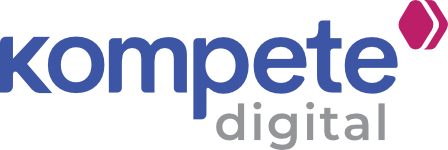When talking about digital marketing, the noise around automation, hyper-targeting, and real-time dashboards can often feel more confusing than useful.
At its centre sits programmatic advertising, empowering modern ad campaigns across mobile, video, social, TV, and audio.
It enables businesses to buy ad space through real-time auctions, where advertisers’ criteria are matched with publishers’ inventory, making ad placements faster, smarter, and more efficient.
In this guide, we’ll take a close look at what is programmatic advertising, break down how programmatic advertising works, and show why partnering with the right SEO services company can make the whole process less overwhelming.
What is Programmatic Advertising? Unpacking the Basics
If you’ve run digital ads before, you probably remember those back-and-forth emails with sales reps, trying to lock down placements, timeframes or haggle over budgets.
The old way was slow, not very precise, and, frankly, a bit painful.
Today, programmatic advertising is how most online ad space gets bought and sold. Instead of relying on people to manually pick and place every ad, companies use automated software.
This software does all the heavy lifting—deciding the best time, place, and audience for ads—in milliseconds. Marketers “set up the rules,” and technology does the rest. That’s the simple answer to what is programmatic advertising.
So, what are programmatic ads, exactly?
If you come across the term what are programmatic ads, it’s referring to any ad shown as a result of this automated, real-time buying and selling process.
Banners on news sites, pre-roll video ads, sponsored posts on your favorite app, and even streaming TV commercials—many of these use programmatic advertising behind the scenes.
How Programmatic Advertising Works?
Explaining how programmatic advertising works doesn’t have to sound like a tech manual. Here’s a simple comparison: imagine you want to book a hotel room.
Instead of contacting each hotel for options, you can use a booking platform that instantly compares prices, dates, and locations—and then delivers the best deal. That’s what programmatic software does for marketers.
Here’s what happens each time a webpage or app loads
- A space opens up for an ad as someone visits a website or app.
- User data (location, device type, etc.) is packaged into a bid request and sent to ad exchanges or Supply Side Platforms.
- Advertisers evaluate the opportunity and submit bids—automatically, based on targeting rules, budget, and performance goals.
- The advertiser with the strongest bid for that specific user wins, and their ad appears in front of the visitor right away.
This whole process, called real-time bidding (RTB), happens several billion times a day, and takes less time than the blink of an eye.
Key Tools in Programmatic Buying
There are a few main pieces involved:
- DSP (Demand-Side Platform): Where advertisers go to set up, manage, and optimize their campaigns . Example: Google DV360, The Trade Desk.
- SSP (Supply-Side Platform): Where publishers offer up their digital ad space . Example: Google Ad Manager, PubMatic, Magnite.
- Ad Exchange: Serve as the “marketplace” where DSPs and SSPs meet, and the bidding takes place . Example: Google AdX, Xandr, etc.
Understanding the basics is important if you’re considering integrating programmatic advertising strategy into your marketing mix or working with an experienced SEO services company to help you run things.
Why Has Programmatic Advertising Taken Over?
The main drivers? Speed, precision, and flexibility —all powered by automation and data.
- Less waste: Instead of paying for “everyone,” you can zero in on your actual customers or prospects based on browsing behavior, demographics, interests, and even device type.
- Better control: Whether you’re spending $500 or $5 million, get clear visibility into where your ads run, who sees them, and the ROI they generate.
- Reach across the web: Banners, videos, mobile, social media, and even podcast ads—all managed in one place.
Just like a smart thermostat learns when to heat up or cool down your house, programmatic advertising learns from data and patterns, helping ensure your ads are shown only when (and where) it makes sense.
Kinds of Programmatic Advertising (Not All Campaigns Look Alike)
Before you get too far, let’s talk about the types you’ll come across. Understanding them can help you choose the right strategy based on your objectives, desired control, and budget.
Real-Time Bidding (RTB)
It is the most common method. When a user explores a page, the ad inventory is up for grabs in an open auction. The highest offer wins, and the ad is served instantly.
RTB is excellent for scaling brand reach and offers immediate results, but advertisers often have limited control over exact placements.
Private Marketplaces (PMPs)
These are controlled, invite-only auctions. Top websites (think major publications) offer premium placements to select advertisers. This means better quality inventory, but usually at a higher price.
Programmatic Direct
These are the most controlled bids. Advertisers buy specific inventory at fixed prices and guaranteed volume, without going through auctions. It offers the simplicity of traditional direct deals, combined with automated delivery via programmatic systems.
Preferred Deals
Publishers offer their ad space to selected advertisers. Advertisers can preview this inventory and decide whether to buy it for a fixed rate or decline the request. If the request is declined, the ad space is sent to an open auction for bidding.
Whether you’re looking for broad reach or a handful of high-quality placements, there’s probably a programmatic advertising strategy that fits.
How to Build a Programmatic Advertising Strategy
It’s easy to get lost in dashboards and features, but start with a few steps:
Set clear goals
Understand your customer
Use your existing customer data, research, or analytics to build specific buyer personas and segments. Targeting based on demographics, interests, etc. helps you reach the right users.
Pick your platforms
Choose platforms as per your goals and audience reach. Google DV360, The Trade Desk, Amazon DSP, and others vary in inventory, targeting, and user experience.
If you’re unsure, an SEO services company can walk you through it.
Design your creative wisely
Test different messages and visuals. What speaks to busy parents won’t work for young professionals.
Track and learn
Don’t set your campaign and forget about it. The best programmatic advertising strategy keeps learning, adjusting, and improving every week.
Tip: If you hit a wall, bring in help—don’t let complexity stop you from seeing results.
Don’t Fall For These Common Pitfalls
Even with advanced automation, programmatic advertising comes with its own set of traps. Here’s what you need to watch out for:
- Avoid the cheapest inventory, which might mean your ad shows up next to low-value or deceptive content. C hoose “brand-safe” environments.
- Ad fraud: It’s real, but you can minimize risk by partnering with legitimate programmatic platforms and experienced pros.
- Over-targeting: Don’t get so specific that you limit your audience too much. Sometimes simplicity wins . Start broad, test wider audience segments, and refine based on performance and ROI.
A knowledgeable SEO services company can help you monitor and adjust campaigns to maximize the value of your budget.
Privacy and the Future of Programmatic Advertising
Privacy changes are making everyone rethink how digital ads work. This means focusing on the way ads are targeted and tracked is evolving:
- Focus on first-party data (what you’ve collected directly from customers ). It can help design personalized campaigns that are both compliant and effective among target audience.
- More interest in contextual targeting (placing ads on relevant content, instead of chasing users everywhere online).
- New tools are always popping up to keep programmatic effective—and privacy-friendly—as laws tighten.
Adapt and be transparent with users. Programmatic will keep evolving, but clear communication and respect for privacy help build trust, no matter what changes come.
Why Work With an SEO Services Company?
Trying to manage programmatic advertising solo, without much experience, can eat up your time and budget. That’s where an SEO services company comes in:
- They’ve seen dozens (if not hundreds) of campaigns—so they spot problems quickly and apply best practices.
- They know which platforms and settings work best for your market.
- They can recommend data tools or creative tweaks to move the needle faster.
A strong partnership means your business isn’t just “doing programmatic,” but doing it well.
Wrapping Up: Make Programmatic Work For You
If you ever found yourself stuck on what is programmatic advertising, hope this cleared things up.
Whether you’re searching for answers about what are programmatic ads, building your next big programmatic advertising strategy, or just looking for fresh programmatic advertising examples to inspire your team, the takeaway is simple—blend smart technology with the right expertise for the best results.
Want to see how this could work for your business? Partner with an experienced SEO services company, and turn complexity into clarity. You don’t need to be a tech expert to see your ads work harder.





